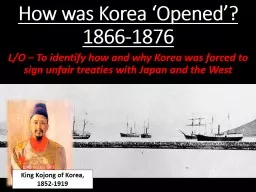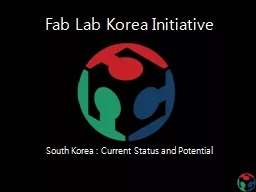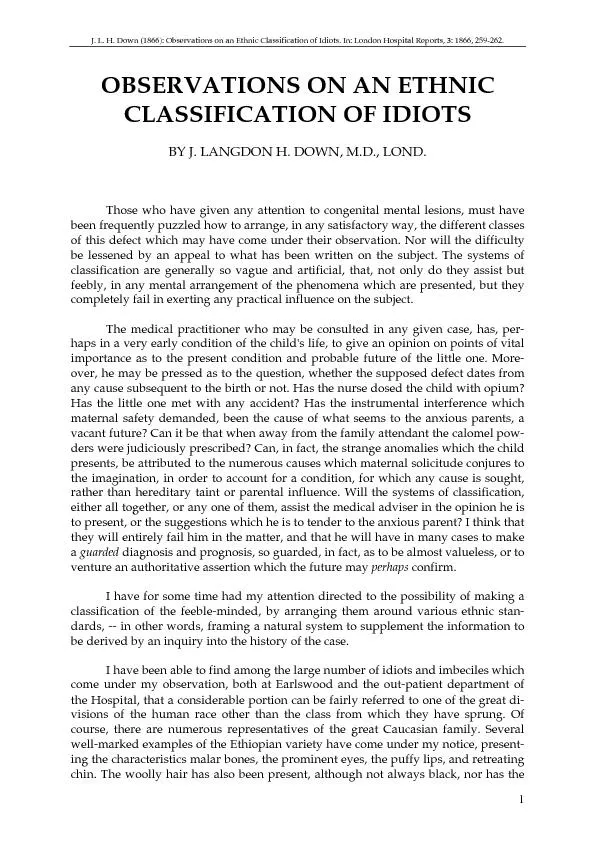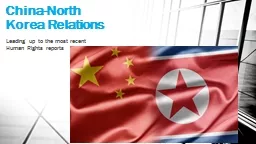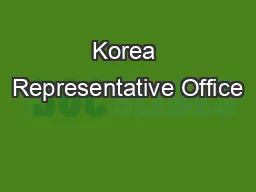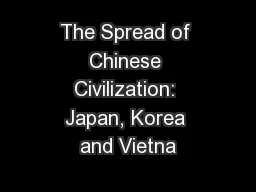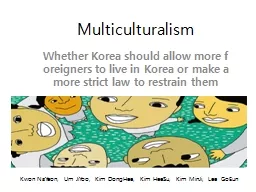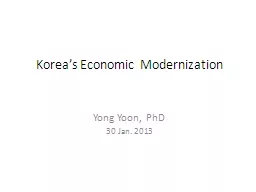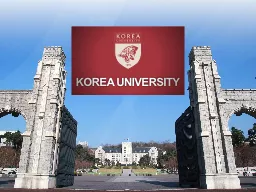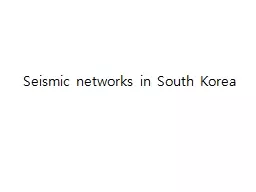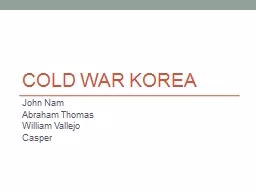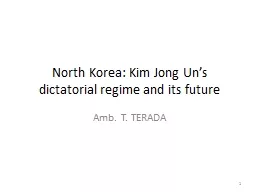PPT-How was Korea ‘Opened’? 1866-1876
Author : briana-ranney | Published Date : 2016-11-26
LO To identify how and why Korea was forced to sign unfair treaties with Japan and the West King K ojong of Korea 18521919 Choson Korea 13921910 Korea had been
Presentation Embed Code
Download Presentation
Download Presentation The PPT/PDF document "How was Korea ‘Opened’? 1866-1876" is the property of its rightful owner. Permission is granted to download and print the materials on this website for personal, non-commercial use only, and to display it on your personal computer provided you do not modify the materials and that you retain all copyright notices contained in the materials. By downloading content from our website, you accept the terms of this agreement.
How was Korea ‘Opened’? 1866-1876: Transcript
Download Rules Of Document
"How was Korea ‘Opened’? 1866-1876"The content belongs to its owner. You may download and print it for personal use, without modification, and keep all copyright notices. By downloading, you agree to these terms.
Related Documents

